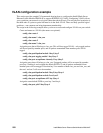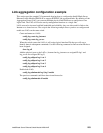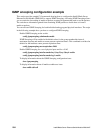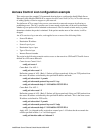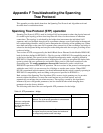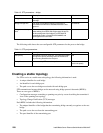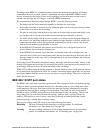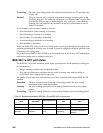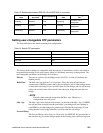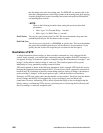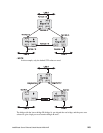
257
Appendix F Troubleshooting the Spanning
Tree Protocol
This appendix provides details about how the Spanning Tree Protocol and Algorithm work and
describes how to troubleshoot them.
Spanning Tree Protocol (STP) operation
Spanning Tree Protocol (STP) is used in a bridged LAN environment to reduce the physical network
to a stable logical topology with no data loops that still allows for the existence of redundant
connections. The topology is calculated by the bridges that interconnect the individual LAN
segments, and is recalculated when physical or parameter changes occur. Each bridge in the network
has a unique bridge identifier, which is used to determine the root bridge of the spanning tree. Where
more than one bridge on the same LAN segment offers connectivity to the root bridge, one bridge is
selected as the designated bridge and one port on that bridge becomes the root port, providing access
to the root bridge.
Two versions of STP are supported by the Intel® Blade Server Ethernet Switch Module IXM5414E,
both of which are defined in IEEE 802.1s. The first version is IEEE 802.1D compatibility mode, set
as the factory default. The second version is Rapid Reconfiguration mode, originally defined in
IEEE 802.1w. Rapid Reconfiguration uses a bridging device’s ability to recognize full-duplex links
(point-to-point) and ports connected to end stations (edge ports) to offer faster transitions to the
forwarding state. The config spanningtree forceversion command is used to switch from
IEEE8021D operation to IEEE 802.1w operation. The two versions of the protocol can interoperate
within the same LAN: it is not necessary for all bridges to run the same version. Where IEEE
802.1D is mentioned in this document, you should understand that the switch is actually operating in
IEEE 802.1D compatibility mode according to the protocol specified in IEEE 802.1s.
Both versions of the Spanning Tree Algorithm (STA) create a single spanning tree for an entire
network within which there is at most one route between any two end stations, and will
automatically reconfigure the tree when necessary. The topology created by the algorithm is
influenced by user-configurable parameters, but care should be taken when changing these
parameters from the factory defaults.
The following table shows the user-configurable STP parameters for the bridge.
Table 10. STP parameters – bridge
Parameter Description Default value
Bridge identifier
(Not user-configurable
except by setting the
priority as described in
this table)
A combination of the Bridge Priority and the switch MAC
address. The 16-bit priority parameter is concatenated
with the 48-bit Ethernet MAC address.
32768 + MAC
Bridge Priority A relative priority for each bridge. The lower the number
the higher the priority and the greater the likelihood of
the bridge being elected as the root bridge.
32768






